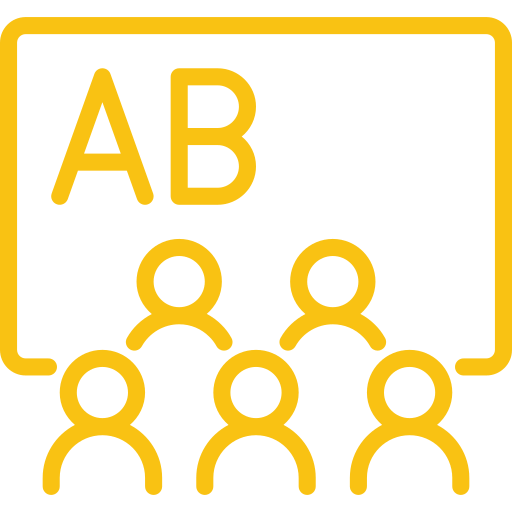Although most students cope successfully with the daily stresses of school, others have a difficult time overcoming these challenges. As teachers, we are often the first people to recognize when a student is in distress. For this reason, we play a vital role in building students’ resiliency. While we cannot always provide personal counseling or one-to-one support for every student, we can create a classroom where students feel encouraged and supported. We can help our students become more resilient when we openly acknowledge the difficulties students face in school and help students learn positive coping strategies.
What are some signs that a student may be in distress?
Students of every age can experience high levels of stress, conflict and personal challenges that affect their physical and mental health, behavior, and academic performance. Some students become withdrawn from school, lose their ability to cope, or even experience thoughts of harming themselves or others.
A student in distress may not be disruptive to others but may exhibit behaviors which indicate something is wrong. Indicators may include: 1) Serious grade problems or a dramatic change in performance; 2) Excessive absences or inconsistent attendance; 3) Unusual or changed patterns of interaction with teachers or peers; 4) Irritability, outbursts of anger, or other exaggerated emotional responses which appear inappropriate to the situation; or 5) Repeated requests for special consideration, such as deadline extensions, especially if the student appears uncomfortable or highly emotional while disclosing the circumstances prompting the request.
How do students deal with distressing situations?
The thoughts and feelings we experience during distressing situations are overwhelmingly painful. It is only natural that we want to stop feeling the pain. We use coping strategies as a way to deal with – or attempt to stop – the pain and distress. When students do not learn positive coping strategies, they often adopt unhealthy or unhelpful strategies. These unhealthy coping strategies include:
- Over-analyzing the situation. Example: “If only I hadn’t been distracted. I should have done…Or this….”
- Dwelling on other situations where they felt the same way. Example: “This is exactly how I ended up failing my class last semester.”
- Worrying the same situation will happen again in the future. Example: “What if I never get this right? What if I fail again the next time I try?”
- Taking actions to avoid the situation from occurring again. Example: “I’m never taking another challenging course. I am going to stop working in groups from now on.”
- Punishing or hurting themselves in some way. Example: “I don’t deserve to feel good. I might as well give up on it all now.”
In each of these situations, we keep circling back to what’s bothering us which keeps us in a state of misery. Before we can move forward and take positive steps to reduce our pain, we have to break this cycle of negative thinking.
What positive coping strategies can we help our students learn?
While we cannot take away our students’ stress, pain, or distress, we can help them create healthy “diversions.” These diversions can free students from negative thought patterns so they feel stronger, healthier, and more resilient to face their challenges. In essence, we can help our students stop focusing on the overwhelming pain they feel so they are better able to move forward. Consider these positive ways to cope during distressing times:
Deploy gratification. There’s no better way to distract ourselves from overwhelming emotions than doing something we enjoy. As a classroom activity, have students create a list of “Ten Things that Cheer Me Up.” Encourage students to engage in positive activities when school starts to feel too challenging.
Engage with others. When we feel overwhelmed, we often also feel isolated or alone. We feel that others cannot possibly understand our grief or stress. This is the perfect time to do something for someone else. When we do good things for others, whether it be our family members, friends, or even our pets, we feel more positively connected and better able to manage our lives. Ask students to make lists of ways they can help others in their lives.
Use positive visualization. We can replace negative thinking with positive thoughts by focusing on good memories, observing the world around us with curiosity, or imagining new stories or places. Teach students how to use mindfulness and reflection to take their minds to more positive places. In addition to visualizing positive scenarios, we can encourage students to listen to their favorite music, read or recite their favorite poems or stories, or even solve word or math problems!
Take on mundane tasks. This may be a harder sell for students but doing chores can often serve as a distraction when we are upset. Organizing a desk, helping a parent sort laundry, or cleaning up folders on the computer can all feel satisfying while also serving to distract. Encourage students to make a list of chores they could do when they need to divert their attention during stressful times.
Celebrate the good. When we get caught in a cycle of negative thinking, it is easy to believe we are not as successful, strong, or smart as others. Encourage students, when they are feeling down, to focus on their strengths. Ask students to make lists of their greatest strengths or talents or reasons to feel proud of themselves. Students can also use their talents in art, music, or writing to create works that celebrate or honor their individual strengths. These kinds of activities can be challenging for students who lack confidence, but they are all the more important for this reason.
We can be the positive role model our students need
We help our students when we show them how to manage challenging situations and emotions. When we take the time to talk about stress – and ways to manage it – we build our students’ resiliency and our own.





















